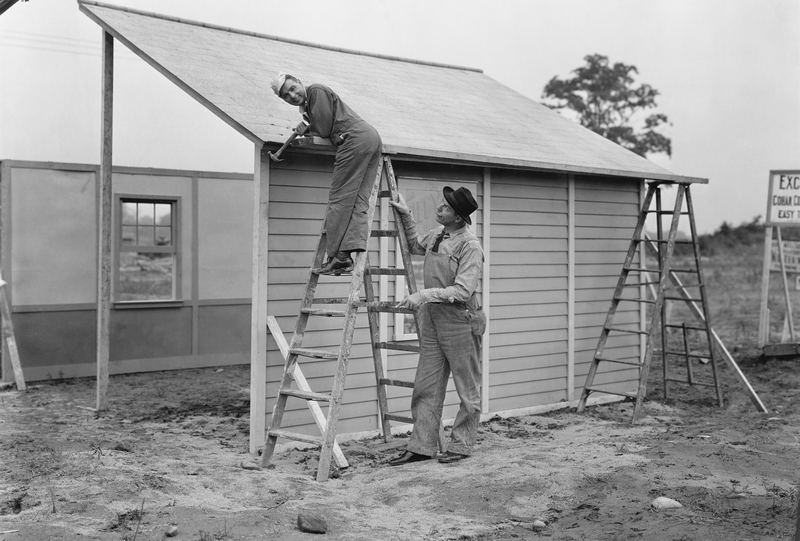You can’t do everything yourself.
There’s something very satisfying about a DIY project. Whether it’s painting a spare bedroom or hanging wallpaper, doing work yourself is a great way to save cash. However, there are some DIYs even the most experienced DIYer should avoid. “With the world of DIY and Instagram remodelers, it’s never before been so accessible to give yourself the house of your dreams,” says interior designer and professional organizer Sam Lund of Simply Sam. But in reality, it can become a complete nightmare if something goes wrong. Here are seven DIYs you should never do on your own.
Wall Demolition
We’ve seen it on HGTV. All you need to open up that kitchen wall is a new pair of overalls and a freshly-sharpened axe. But it’s far different in real life. Unless you built your home, what’s behind that wall is a mystery. It could be plumbing, electrical wiring, or in older homes, a hazardous material such as asbestos. There is also a risk of physically injuring yourself.
Electrical Work
There’s a reason why electricians need to be licensed. Electrical work can be very dangerous and can even start a fire. “DIYing electrical may be easy, such as in the case of changing a light fixture, but I can’t tell you how many times the light we were switching out had faulty wiring. Make a plan, and get quotes from several electricians. It will save you from problems down the road,” Lund advises.
Plumbing
Just because you can plunge a toilet or snake a drain doesn’t mean you can install a wet bar in your living room. Lund tells me, “While you may be able to switch out your faucet or garbage disposal, we always suggest having a professional check it out. Everything under the sink ties in together and I’ve seen the mess it can make when things get crossed between each other.”
Keep in mind that if your DIY work results in a flood, your homeowners’ insurance may not cover the damage.
Anything Requiring a Ladder
Whether it’s hand-panting crown molding or fixing a leaky roof, this type of DIY can be deadly. According to Injury Facts, 42,114 people died in falls at home and at work in 2020. A home project is never worth risking your life for.
Installing Flooring
Removing old floors and putting in new ones seems simple, but according to Kat Christie, DIY expert, licensed contractor, and founder of She Fixed That, it’s quite work intensive. “I don’t recommend doing your own floors, as the cleaning, stripping, scrubbing, and scraping can be dangerous and includes a lot of different stains and chemicals.”
Flooring is also expensive, so you don’t want to make a costly mistake that can ultimately lower the value of your home.
Projects That Require Harsh Chemicals
While many DIYs are relatively safe, those requiring a lot of chemicals can very dangerous. “For example, if you are using mineral spirits, paint thinner, bleach, many adhesives, denatured alcohol, to name a few, you absolutely need to have safety measures in place,” Christie says. “You need to be wearing goggles, gloves, wearing a respirator, and have proper ventilation. It may not seem like you are being exposed for a long time during these projects, but every bit counts, and we’re talking about your health and safety here.”
Stripping Paint
You might think stripping paint is no different than removing nail polish, but Christie tells me this is far from the case. “It may be fun to think about stripping paint from a mirror you bought at a flea market, but you are also bringing chemicals into your home, so they should be treated with seriousness. You need to be aware that there may be lead paint underneath the paint or old adhesives, so you would want an expert to handle that.”
*****If you’re stripping paint, especially in a house built before 1978 (when lead paint was banned), keep in mind that you may be exposing yourself to dangerous lead paint. Call in the pros who will know how to remove old paint safely.*****
Amanda Lauren, Real Simple
